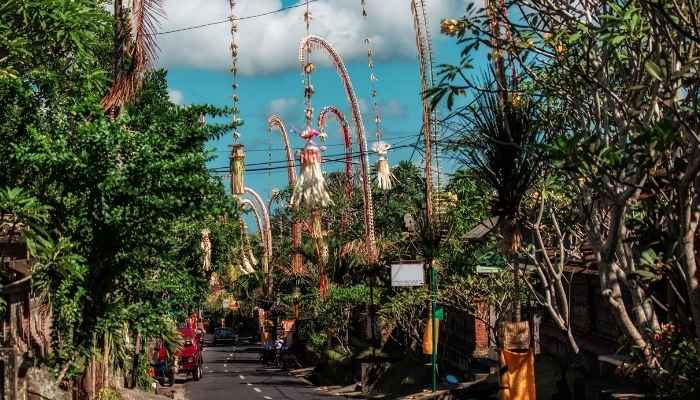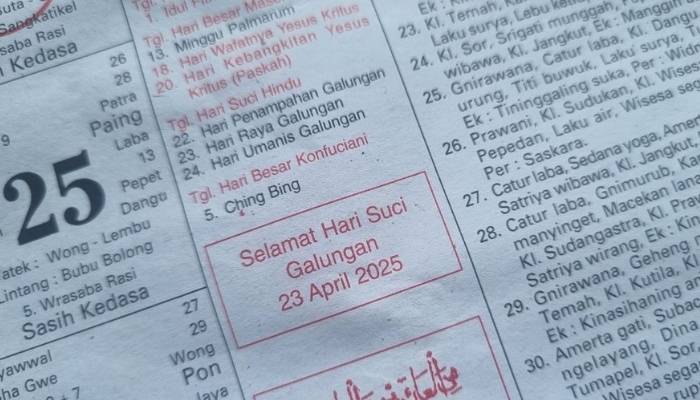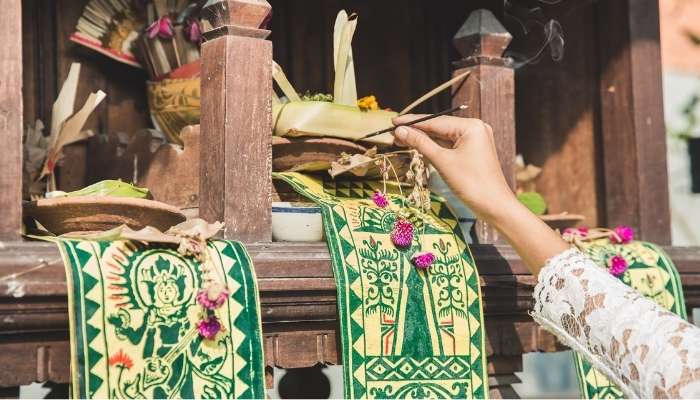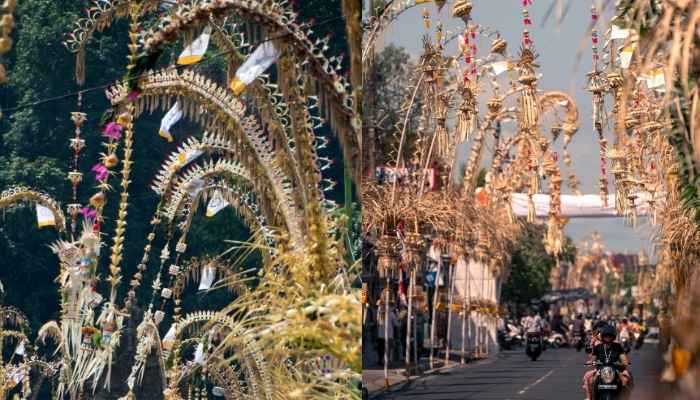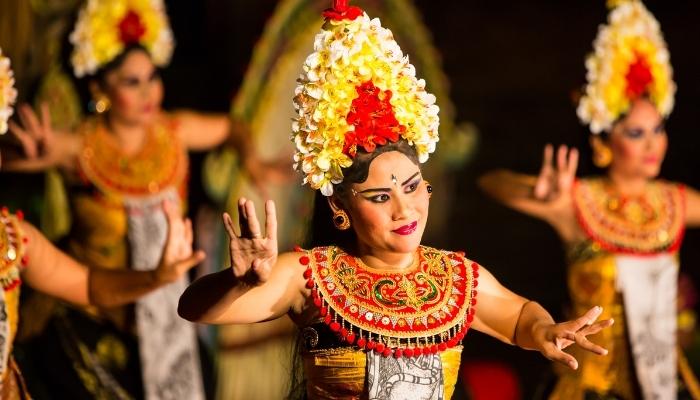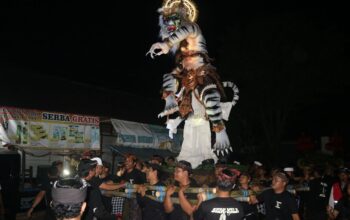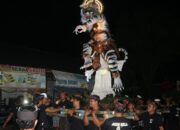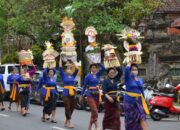What Are Galungan and Kuningan? (Meaning and Philosophy)
Galungan and Kuningan are two of the most significant religious celebrations in the Balinese Hindu calendar. Galungan commemorates the triumph of Dharma (truth and goodness) over Adharma (evil and untruth). According to Balinese Hindu belief, during Galungan, the ancestral spirits return to visit their families, who welcome them with offerings and prayers.
Kuningan is celebrated ten days after Galungan and is believed to be the day when these ancestral spirits return to their realm. This occasion symbolizes the conclusion of the ancestors’ “visit” and is marked with deep spiritual reflection and unique offerings like endongan and tamiang.
The philosophy behind these holy days is profound. Galungan is not only about spiritual victory but also about maintaining balance in life, inner purity, and gratitude for existence. Kuningan reminds people of the impermanence of life and the importance of living with sincerity, integrity, and an awareness of virtue.
When Are Galungan and Kuningan Celebrated?
Galungan and Kuningan do not fall on fixed Gregorian calendar dates because they are based on the Pawukon calendar, a traditional Balinese calendar system that follows a 210-day cycle. Galungan is observed on Budha Kliwon Dungulan, while Kuningan falls on Saniscara Kliwon Kuningan.
As a result, these holidays can occur twice within a single Gregorian year. This frequency gives the Balinese a spiritual rhythm that’s more present and active compared to other cultural holidays.
What Do People Do to Celebrate?
The Galungan and Kuningan ceremonies are preceded by a series of interconnected holy days, each filled with meaning and ritual. These include:
-
Sugihan Jawa and Sugihan Bali: Days for spiritual and physical cleansing before Galungan.
-
Penyekeban: A day to prepare bananas for offerings by ripening and storing them.
-
Penampahan Galungan: The day of slaughtering animals, usually pigs or chickens, for rituals and traditional dishes.
-
Galungan Day: Major prayers are held at home and temples; villages are decorated with tall, graceful penjor (arched bamboo poles symbolizing mountains and prosperity).
-
Manis Galungan: A day for visiting family and relaxing.
-
Kuningan Day: Offerings are made in the morning as it is believed ancestral spirits only remain until midday. Tamiang and endongan decorations symbolize spiritual protection and sustenance.
These activities are not merely ritualistic but also foster strong familial bonds and intergenerational spiritual education.
Unique Aspects of Galungan and Kuningan
Several features make these celebrations distinctly Balinese and different from other religious holidays:
-
The iconic penjor lining streets and homes, creating a rich spiritual and visual atmosphere.
-
The structured and elaborate rituals, which engage entire families at every level.
-
Children dressed in traditional attire, playing traditional instruments and adding vibrant cultural life to the celebration.
-
Special festive foods like lawar, sate, urutan, tum, and various Balinese sweets—integral parts of the tradition.
-
A deeply spiritual perception of the holidays, seen as moments for reflection, inner cleansing, and moral realignment.
The Impact and Tourism Appeal of Galungan and Kuningan in Bali
Galungan and Kuningan hold not only spiritual importance for Balinese Hindus but also have a significant impact on Bali’s tourism industry. As these festivals approach, the island sees a rise in visitors eager to experience the unique religious atmosphere firsthand.
Some key tourism attractions during these holidays include:
-
Penjor-lined streets that offer visually stunning landscapes, perfect for photography and cultural immersion.
-
Cultural and artistic performances held at temples and cultural centers, giving foreign visitors deeper insight into Balinese Hinduism.
-
Spiritual tour packages offered by local travel agencies, allowing tourists to participate in rituals under guidance.
-
Popular homestays and local accommodations, as many tourists prefer to stay with local families for an authentic cultural experience.
-
Cultural preservation campaigns led by local tourism players, emphasizing Balinese spirituality and tradition as the island’s core appeal.
However, during Galungan and Kuningan, many shops and businesses may close or have limited hours as locals prioritize religious duties and family. This presents both a challenge and a learning moment for tourists to respect local customs during these sacred times.
Conclusion
Galungan and Kuningan are far more than holidays or religious ceremonies. They are living expressions of the Balinese people’s beliefs, philosophy, culture, and identity. These festivals teach the importance of self-reflection, honoring ancestors, and upholding righteousness in the face of negativity.
In today’s world, Galungan and Kuningan also add immense value to Bali’s tourism landscape, offering visitors the chance not only to admire the island’s natural beauty but also to immerse themselves in its spiritual depth and cultural richness. This blend of sacred tradition and warm hospitality is what makes Bali eternally unique in the eyes of the world.
